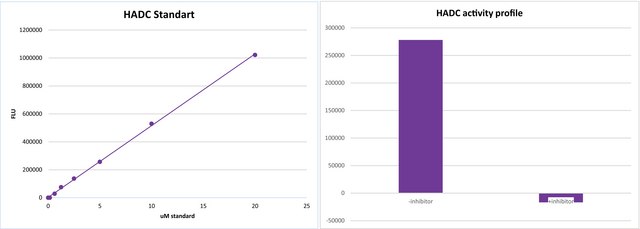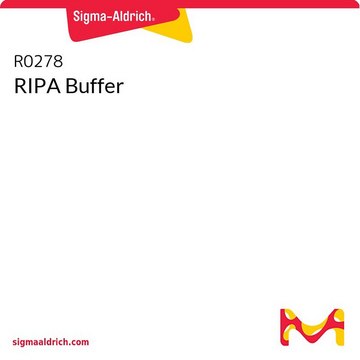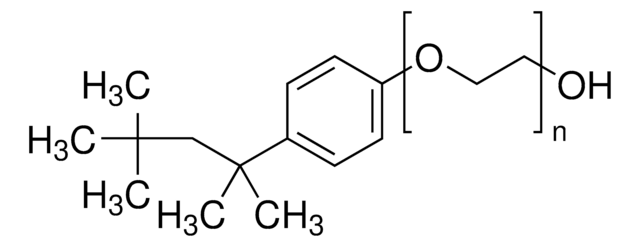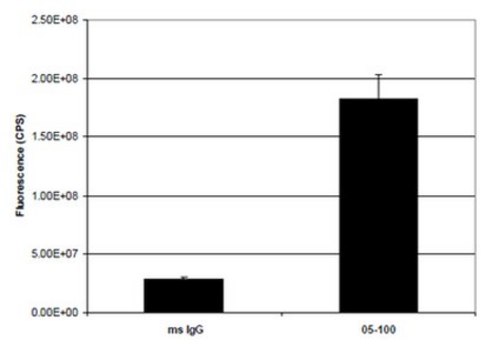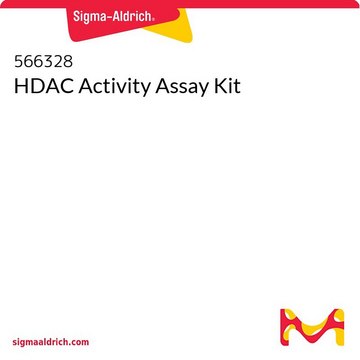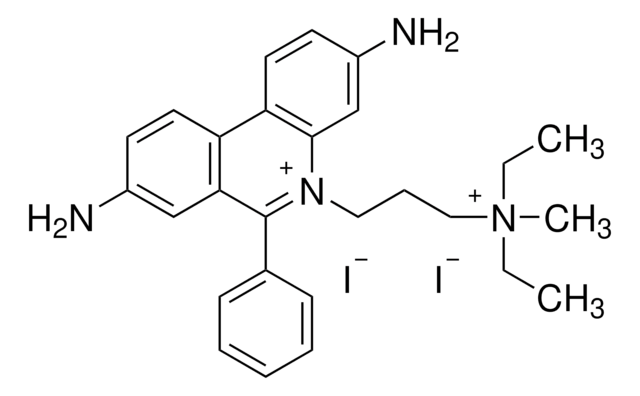推荐产品
生物来源
mouse
质量水平
偶联物
unconjugated
抗体形式
purified immunoglobulin
抗体产品类型
primary antibodies
克隆
HDAC1-21, monoclonal
表单
buffered aqueous solution
分子量
antigen ~65 kDa
种属反应性
mouse, human
浓度
~2 mg/mL
技术
immunoprecipitation (IP): suitable
indirect ELISA: suitable
microarray: suitable
western blot: 2-4 μg/mL using total cell extracts of HeLa cells
同位素/亚型
IgG3
UniProt登记号
运输
dry ice
储存温度
−20°C
靶向翻译后修饰
unmodified
基因信息
human ... HDAC1(3065)
mouse ... Hdac1(433759)
一般描述
Anti-Histone Deacetylase 1 (HDAC1) antibody, Mouse monoclonal (mouse IgG3 isotype) is derived from the HDAC1-21 hybridoma produced by the fusion of mouse myeloma cells and splenocytes from BALB/c mice immunized with a synthetic peptide corresponding to amino acids of human and mouse histone deacetylase 1 (HDAC1).
Histone deacetylases (HDACs) are competing enzymes, belonging to histone deacetylase family. There are two classes of HDACs with six to seven different types of HDACs proteins. HDAC1,HDAC2 and HDAC3 belong to Class I HDACs and HDAC4, HDAC6, and HDAC7 belong to Class II HDACs. Class I HDACs consists of a single deacetylase domain at the N-termini and diversified C-terminal regions, while Class II contains a deacetylase domain at C-terminal position.
应用
Anti-Histone Deacetylase 1 (HDAC1) antibody, Mouse monoclonal has been used in:
- enzyme-linked immunosorbent assay (ELISA)
- immunoprecipitation
- immunoblotting
生化/生理作用
HDAC1 is widely studied and is shown to actively modulate the eukaryotic chromatin structure. It deacetylyses lysine residues on core histones (H2A, H2B, H3 and H4) at the N-terminal. It is a vital component of cofactor complexes and is involved in transcription regulation. Histone deacetylation results in transcription repression leading to the formation of tight nucleosomal structure which prevents DNA accessing.
外形
solution in 0.01 M phosphate buffered saline, pH 7.4, containing 15 mM sodium azide.
免责声明
Unless otherwise stated in our catalog or other company documentation accompanying the product(s), our products are intended for research use only and are not to be used for any other purpose, which includes but is not limited to, unauthorized commercial uses, in vitro diagnostic uses, ex vivo or in vivo therapeutic uses or any type of consumption or application to humans or animals.
未找到合适的产品?
试试我们的产品选型工具.
储存分类代码
10 - Combustible liquids
法规信息
新产品
历史批次信息供参考:
分析证书(COA)
Lot/Batch Number
Coactivators and corepressors of NF-kappaB in IkappaB alpha gene promoter
Gao Z, et al.
The Journal of biological chemistry, 280(22), 21091-21098 (2005)
Stem cell factor SALL4 represses the transcriptions of PTEN and SALL1 through an epigenetic repressor complex
Lu J, et al.
PLoS ONE, 4(5), e5577-e5577 (2009)
Yuchen Liu et al.
Nature communications, 8(1), 2095-2095 (2017-12-14)
The catalytically dead Cpf1 endonuclease from Acidaminococcus sp. BV3L6 (dAsCpf1) has been used to construct effective transcriptional repressors in bacteria and plants. However, it is still unclear if dAsCpf1 can function in human cells as a transcriptional regulator or a
Jiayun Lu et al.
PloS one, 4(5), e5577-e5577 (2009-05-15)
The embryonic stem cell (ESC) factor, SALL4, plays an essential role in both development and leukemogenesis. It is a unique gene that is involved in self-renewal in ESC and leukemic stem cell (LSC). To understand the mechanism(s) of SALL4 function(s)
Sudhakar Ammanamanchi et al.
The Journal of biological chemistry, 278(37), 35775-35780 (2003-07-03)
Sp3 transcription factor can either activate or repress target gene expression. However, the molecular event that controls this dual function is unclear. We previously reported (Ammanamanchi, S., and Brattain, M. G. (2001) J. Biol. Chem. 276, 3348-3352) that unmodified Sp3
我们的科学家团队拥有各种研究领域经验,包括生命科学、材料科学、化学合成、色谱、分析及许多其他领域.
联系技术服务部门
